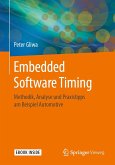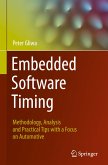In real-time systems timing properties must be satisfied in order to guarantee that deadlines will be met. In this context, the calculation of the worst-case execution time (WCET) is of paramount importance for schedulability analysis. However, this problem can be difficult if the underlying architecture possesses features like caches and pipelines. This book presents the necessary steps for the safe and precise WCET calculation, focused on the use of static analysis-based methods, and in the ARM architecture as target platform. Moreover, in order to ensure the correctness of our calculation to a program consumer, we produce a certificate whose validity entails compliance with the calculated WCET. This evidence permits to locally validate the calculated WCET, avoiding the need for a blind confidence on the producer. This book should be of interest to researchers and practitioners of real-time systems, or anyone else wondering about their inherent challenges.








